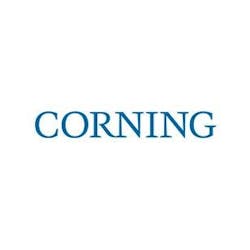Corning’s Q3 optical revenues rise to $1.2 billion on carrier, AI opportunities
Corning's optical communications unit saw a revenue comeback in the third quarter, reporting $1.2 billion in revenues as it inked deals with AT&T and Lumen. Still, the fiber vendor says it’s too early to declare the industry has sprung back.
This comes after several quarters were carriers halted spending as they digested existing inventory.
Earlier this week, AT&T signed a multi-year agreement with Corning for next-generation fiber, cable, and connectivity solutions to support the expansion of AT&T's fiber network to more parts of the country.
One critical element of the agreement is that the platforms will enable AT&T to meet the buildout timelines set for the Broadband Equity, Access, and Deployment (BEAD) program.
“By using Corning's newest preconnectorized solutions, AT&T can accelerate its network expansion and enhance network performance while minimizing deployment costs,” said Wendell Weeks, CEO of Corning, during its third-quarter earnings call. “They'll leverage our latest additions to our portfolio of connectivity solutions, which are fully compliant with the Build America, Buy America provisions of the Broadband Equity, Access and Deployment program.”
But AT&T isn’t the only carrier customer with big plans with Corning.
Verizon, which recently announced a deal to acquire Frontier, plans to expand its fiber reach from 25 million to more than 30 million by 2028.
“At the Broadband Strategy Event last week, Verizon highlighted their partnership with Corning and said we're delivering technologies to make it easier for them to reach their deployment goals,” Weeks said. “They plan to significantly expand their fiber footprint.”
Encouraging carrier outlook
Given the developments with AT&T and Verizon, Corning feels encouraged by the carrier industry outlook.
Weeks said that in Optical Communications, he expects “carriers to return to buying at deployment rates and for their deployment rates to increase and drive growth in 2025.”
He added that BEAD will also become a more significant factor next year. “We expect the BEAD program to gather momentum starting in the second half of 2025.”
Corning sees its latest agreement with AT&T in the carrier segment as part of a growing trend that the company identified as part of its Springboard plan.
Weeks said this is an “encouraging sign for us that we can expect the carrier spring to activate sometime here shortly.”
Still, he cautioned that the company is “not calling that yet because we'd like to see a couple more quarters of the actual order and deployment rates.”
AI payoffs
Driven by new deals with Tier 1 carrier customers like Lumen, AI has become a rising star in Corning’s revenue portfolio.
As part of an agreement with Lumen, which reserves 10% of its global fiber capacity for each of the next two years, Corning recently launched the first outside plant deployment of its new-gen AI fiber and cable system. This system enables Lumen to fit anywhere from 2 to 4x the amount of fiber into their existing conduit.
While Lumen is a key customer, Weeks emphasized it is just one of several it could pursue. “This is an exciting new space, and we expect to capture other large opportunities,” he said.
Corning also introduced a set of innovations to help its customers build a new network to interconnect AI-enabled data centers.
“When we introduced our gen AI products in June, we said we expected to grow our Enterprise business at a 25% compound annual growth rate over the next 4 years,” Weeks said.
Following 42% year-over-year growth in the second quarter, Corning’s Enterprise business grew by 55% in the third quarter versus last year.
Week’s said, “That growth reflects the gen AI opportunity inside the data center.”
Carriers drive optical growth
Optical communications sales were a pivotal contributor to Corning’s third-quarter results.
Corning reported third-quarter optical communications sales of $1.2 billion, up 36% year-over-year.
A key element of its optical business growth during the quarter was its year-over-year carrier business sales.
“We're encouraged by new customer agreements encourage us, including our recent announcements with AT&T and Lumen,” said Edward Schlesinger, CFO of Corning. “Overall, we expect both cyclical and secular drivers in Optical Communications to sustain growth in 2025 and beyond.”
Likewise, in Corning’s Enterprise business, sales rose 55% yearly, driven by the continued strong adoption of AI-related connectivity solutions.
“This marks another record quarter in this business and adds to our confidence in our plan to grow Enterprise at a 25% compound annual growth rate from 2023 to 2027,” Schlesinger said.
From an overall financial standpoint, Corning reported third-quarter GAAP sales of $3.39 billion. Core sales were $3.73 billion.
In the fourth quarter, Corning’s management expects year-over-year sales growth to accelerate and EPS to grow faster than sales, with core sales of ~$3.75 billion and core EPS in the range of $0.53 to $0.57.
For related articles, visit the Business Topic Center.
For more information on high-speed transmission systems and suppliers, visit the Lightwave Buyer’s Guide.
To stay abreast of fiber network deployments, subscribe to Lightwave’s Service Providers and Datacom/Data Center newsletters.
About the Author
Sean Buckley
Sean is responsible for establishing and executing the editorial strategy of Lightwave across its website, email newsletters, events, and other information products.



